How Solar Works – Understanding The Differences
Although they may look complicated, solar panels have no moving parts and require very little maintenance, other than occasional cleaning. An inverter takes the DC power directly from the solar panels and converts it to the same AC power that your home uses. At Sunergy Systems, we care about helping homeowners plan for future energy consumption. Did you know that the average American household consumes 5% more power year over year? With the rising cost of power and fuel, the time to go solar now has never been greater.
Solar panels convert sunlight into electricity that your home can use, reducing your electricity bills. The solar cells, which are also referred to as photovoltaic cells, absorb sunlight during daylight hours.
You now have solar panels working efficiently to transform sunlight into electricity, but the electricity generated is called direct current (or DC) electricity, which is not the type of electricity that powers most homes, which is alternating current (or AC) electricity. Fortunately, a device called an inverter can easily convert DC electricity into AC electricity. In modern solar systems, these inverters can be configured as one inverter for the entire system or as individual microinverters attached behind the panels.
Your monitoring system sends information about how much power your solar system is producing in real-time so you can maintain optimal system performance.
On cloudy days and overnight, your solar panels may not be able to capture enough sunlight to use for energy; conversely, in the middle of the day when nobody is home, they may collect surplus energy—more than you need to operate your home. That’s why a meter is used to measure the electricity flowing in both directions—to and from your home. Your utility company will often provide credits for any surplus power you send back to the grid. This is known as net metering.





